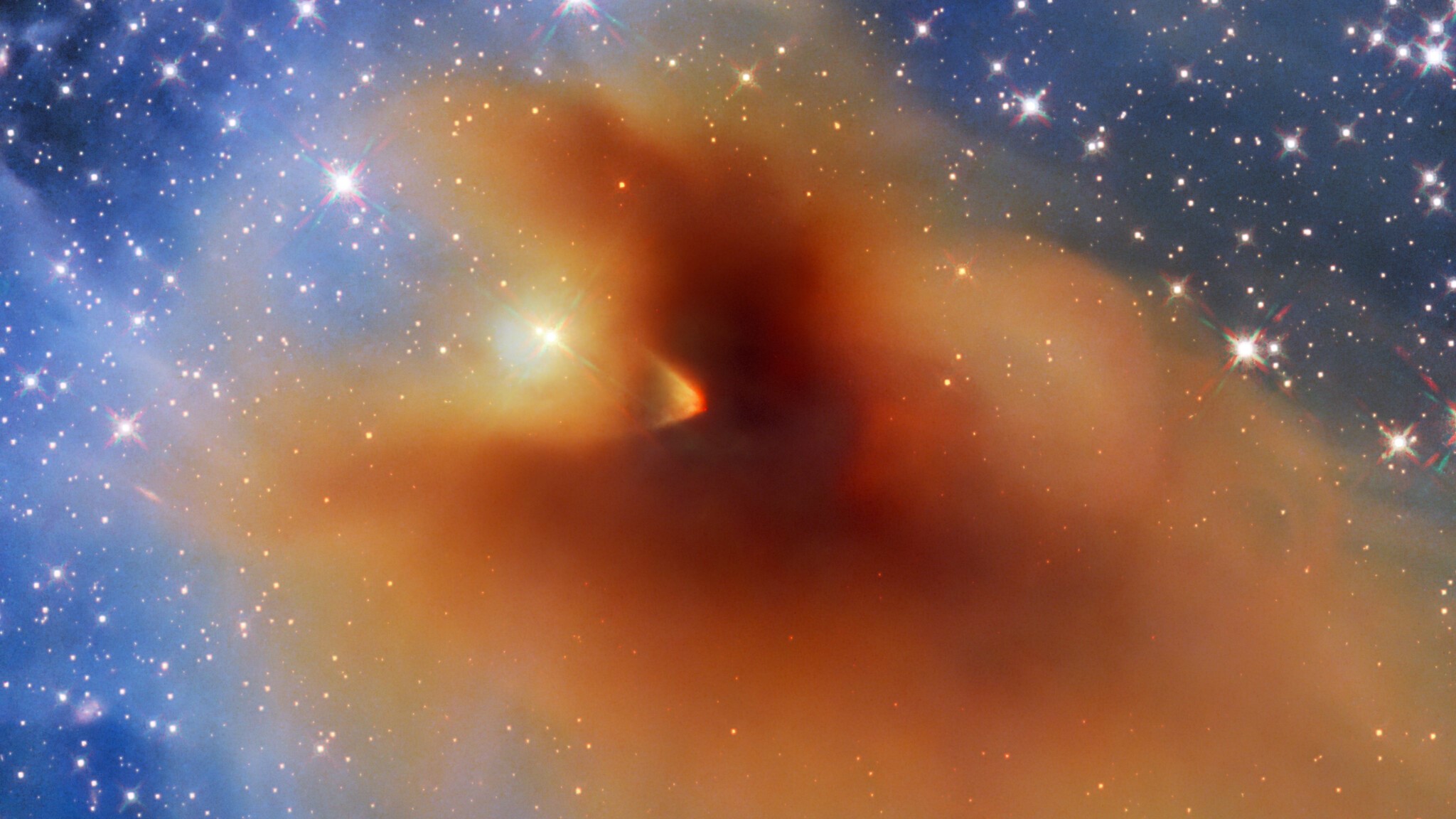Hubble Space Telescope offers stunning view clouded out by a future star
A new image captured by the Hubble Space Telescope shows a molecular cloud of gas and dust that harbors a compact object that will soon become an infant star.
Located 652 light-years from Earth in the constellation of Serpens, CB 130–3 is what astronomers call a dense core, which is a compact agglomeration of gas and dust that acts as the building blocks for star formation, according to a statement from the European Space Agency (ESA), a partner on the Hubble Space Telescope mission. Dense cores such as CB 130–3 are the smallest and densest types of molecular clouds. These clouds are stellar nurseries that can be the birthplaces for multitudes of stars, both singularly and in binary pairs.
Many dense cores already contain young stars, while others demonstrate a slow inward contraction that precedes the cloud's complete gravitational collapse. Both types of dense cores have temperatures of around minus 440 degrees Fahrenheit (minus 262 degrees Celsius) and are usually elliptical.
Related: The best Hubble Space Telescope images of all time!

During the gravitational collapse of these massive fields of cold gas, enough mass can accumulate in select locations to reach the high temperatures and extreme densities needed to kick-start the nuclear fusion that marks the birth of a star and that the star will sustain throughout its main-sequence lifetime.
The new Hubble image shows CB 130–3 resembling perhaps a glass of carrot juice spilled across a tablecloth of stars and galaxies. The image gives no hint of the budding star lurking within the molecular cloud as it teeters on the brink of becoming a fully-fledged stellar body.
However, other details about CB 130–3 are more obvious in the image, which astronomers captured using Hubble's Wide Field Camera 3. For instance, the image demonstrates that the density of the molecular cloud isn't constant. The outer edges of CB 130–3 can be seen as tenuous wisps of gas that simply blur background stars. In stark contrast, the material at the heart of the molecular cloud is so dense that it entirely blocks the light from background stars.
Breaking space news, the latest updates on rocket launches, skywatching events and more!
The gas and dust of CB 130–3 also impact the color of the stars behind it as well as their brightness. The stars seen through the thick material closer to the heart of CB 130–3 appear to have taken on a redder hue than those shining through less dense material at the outer edges of the structure.
And this reddening is more than an interesting cosmetic effect. Astronomers can use the change in color to map the density of CB 130–3, granting them insight into the structure of this stellar nursery.
Follow us on Twitter @Spacedotcom or on Facebook.

Robert Lea is a science journalist in the U.K. whose articles have been published in Physics World, New Scientist, Astronomy Magazine, All About Space, Newsweek and ZME Science. He also writes about science communication for Elsevier and the European Journal of Physics. Rob holds a bachelor of science degree in physics and astronomy from the U.K.’s Open University. Follow him on Twitter @sciencef1rst.
